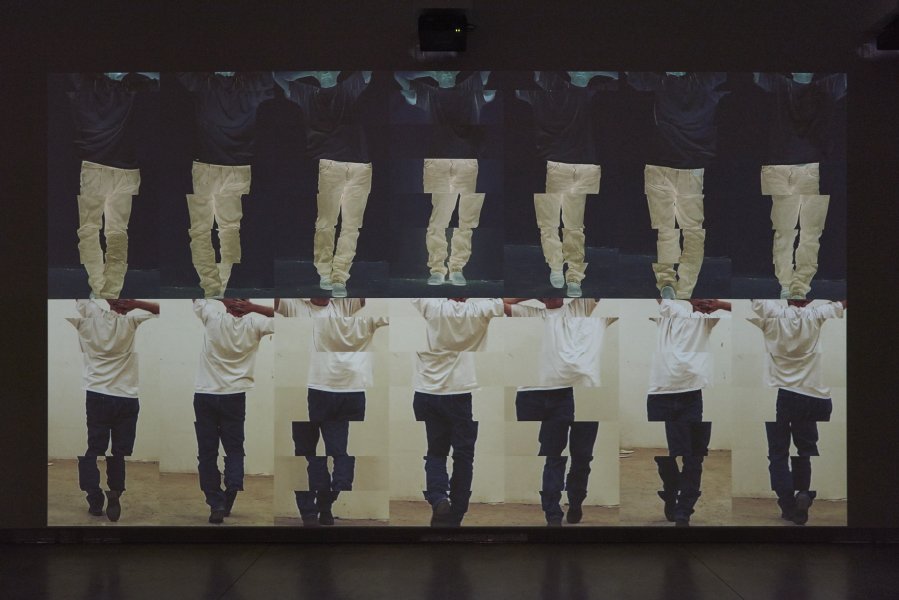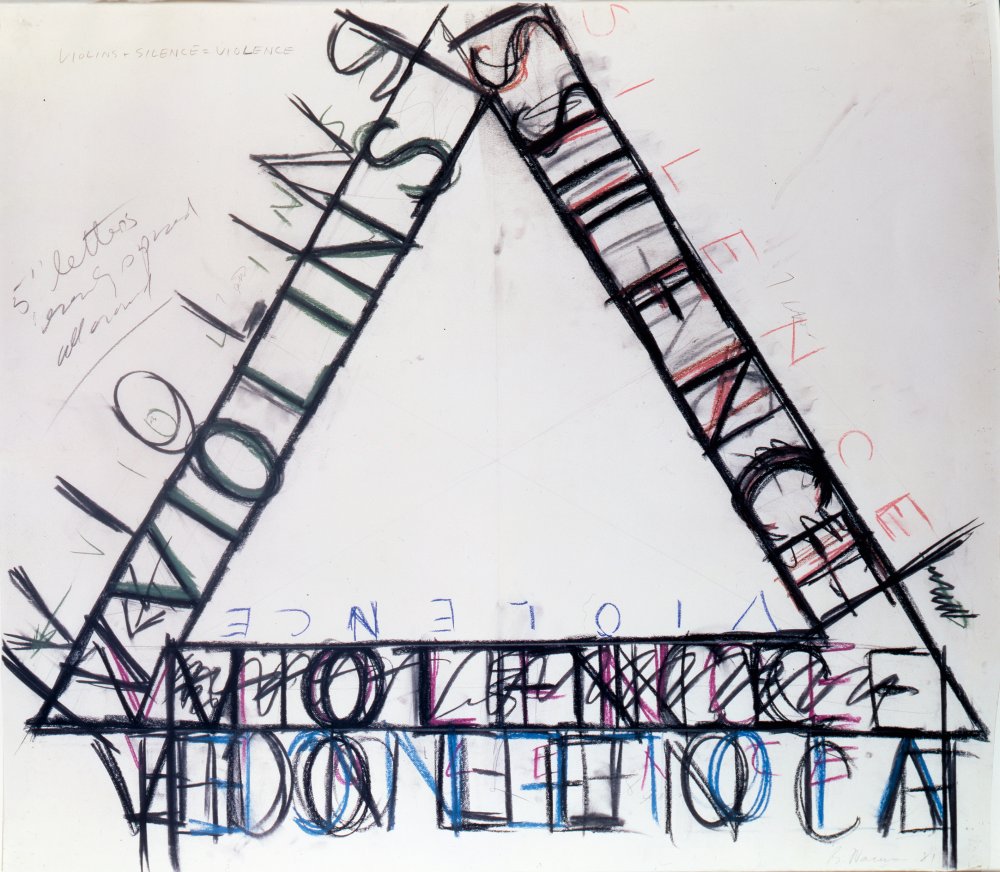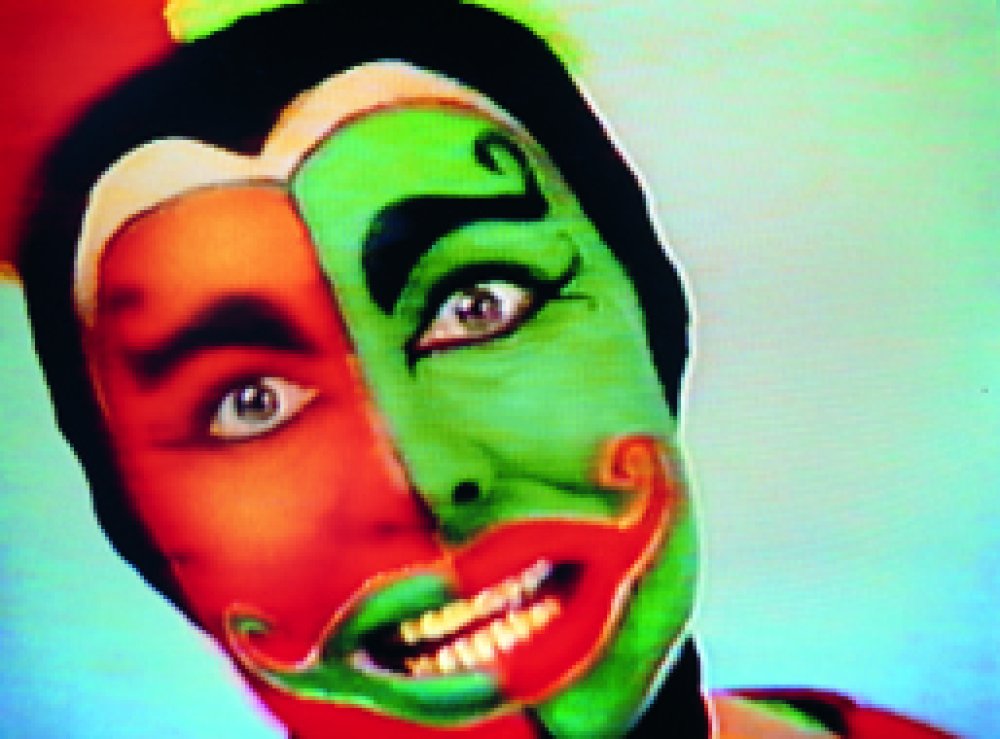Contrapposto studies, I through VII
HD video installation (color, stereo sound, continuous play).
Video element (Contrapposto Study I): 7min. 5sec.
Video element (Contrapposto Study II): 7min. 5sec.
Video element (Contrapposto Study III): 62min. 19sec.
Video element (Contrapposto Study IV): 7min. 5sec.
Video element (Contrapposto Study V): 63min. 21sec.
Video element (Contrapposto Study VI): 7min. 5sec.
Video element (Contrapposto Study VII): 62min. 19sec.
Jointly owned by Pinault Collection and the Philadelphia Museum of Art. Funding for the Philadelphia
Museum of Art is made possible through the generosity of many donors
With Contrapposto Studies, I through VII (2015/2016) Bruce Nauman revisits an earlier work - an exception for the artist -, the video
Walk with Contrapposto, 1968 (room 4). The work from 2015/2016 is presented through a more complex multichannel set - up using the
latest image and sound technologies. The possibility of exploring state - of - the - art technological means to accomplish results that Nauman could not obtain in the 1960s indeed seems to have been the main motivation for this return to an early work.
Almost fifty years later, for Contrapposto Studies, I through VII, Bruce Nauman filmed himself again in his studio, dressed in a simple way, wearing t - shirt and jeans. As in Walk with Contrapposto, he is trying to walk in a straight line, his hands clutched at the back of his head, maintaining his body in a contrapposto pose. He then segmented and digitally cut the images, presenting the fragments of the film in the form of seven large - scale projections. The soundtrack is generated by the transformations of the image and becomes thus more complex with the increasing fragmentation of the video. The essential difference between the early and the 2015/2016 work – made possible thanks to the use of recent technology — is an inversion of the relationship between the figure and the back-ground: as opposed to the 1968 work, in Contrapposto Studies, I through VII, the body seems to remain always in the same place while the wall behind ascends and descends in a continuous movement.
The scale of the projection emphasizes the monumentality of the figure underlining the references to classical sculpture and to the notion of contrapposto. As a matter of fact, the number of projections chosen by Nauman is not trivial: it alludes to the classical concept of the ideally proportioned body in seven parts, a favourite trope of the artist.
Nevertheless, contrasting with the classical ideal, the projections show an aging body struggling with time (heavier torso, uncertain balance). Nauman is shown simultaneously frontally, from the side and from the back, in negative and positive, in order to present himself fully, with no artifice, while testing his sense of balance and his own physical condition. This work thus offers an unvarnished picture of the body’s changes over time.









